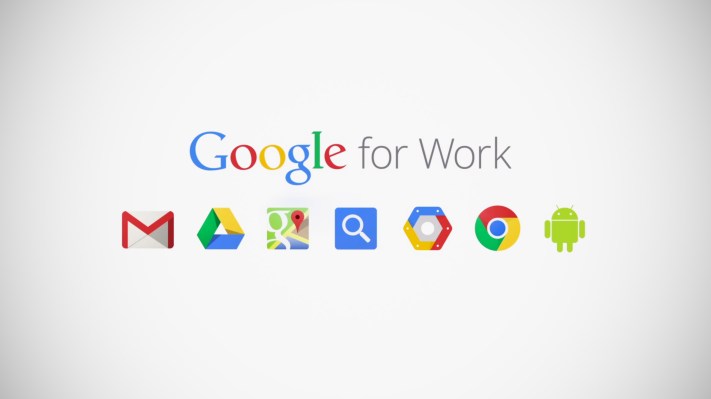This morning at its San Francisco offices, Google announced a rebrand of its enterprise products, renaming the set of tools and productivity services ‘Google for Work.’
The new nomenclature will stretch across the company’s various business tools, with each service picking up a ‘for Work’ appendage — Google now vends Drive for Work, Search for Work, and so forth.
Why the new branding? Google indicated that the new naming allows it to leverage brands that it already considers strong, and that the nomenclature makes it simpler to explain what the tools are — it’s Drive, but for work. (Google’s education-facing efforts were recently cleaved from other offerings, and given their own blog.)
Google’s efforts to gain more share in the enterprise and productivity space puts it in direct competition with Microsoft, among other firms. Notably, Microsoft’s CEO Satya Nadella recently came up with a new slogan for his company, saying that it would focus on ‘productivity and platforms.’ Google seems to agree with that bent. Box, Dropbox and Apple also have irons in this particular fire.
Amit Singh, Google’s president of its enterprise efforts, told the media that Drive for Work, the company’s cloud storage play for business customers, is currently picking up around 1,800 new customers per week. He also indicated that 60 percent of Fortune 500 companies currently use paid Google for Work services.
Google has been aggressive in how it prices cloud computing, and cloud storage. Given its large data-center profile, the company has the footprint to offer commodity tools at basement prices. Other players, such as Amazon, have also reduced their prices, as the market itself benefits from lowering input costs.
As the revenue that companies can derive from commodity cloud services declines, there is an increasing focus on providing services on top of storage and compute tools. Google seems intent to capture share on both sides of the market.
Singh noted that some costs, particularly IT costs, are not coming down in keeping with the general arc of Moore’s Law. That, in his view, is due to legacy expenses caused by past corporate investments that previously performed well, behaving mostly like an anchor in the current business climate. It’s an argument in favor of cloud services in general.
The next question for Google is whether it can grow its productivity services into a key revenue source. In its most recent quarter, ‘Other Revenues’ made up a slim 10 percent of the company’s total top line. That figure, however, is growing more quickly than its other incomes, rising 53 percent year-over-year for the quarter, which compares favorably to Google’s aggregate revenue growth rate of 22 percent, again on a year-over-year basis.
Google certainly thinks that it can.
